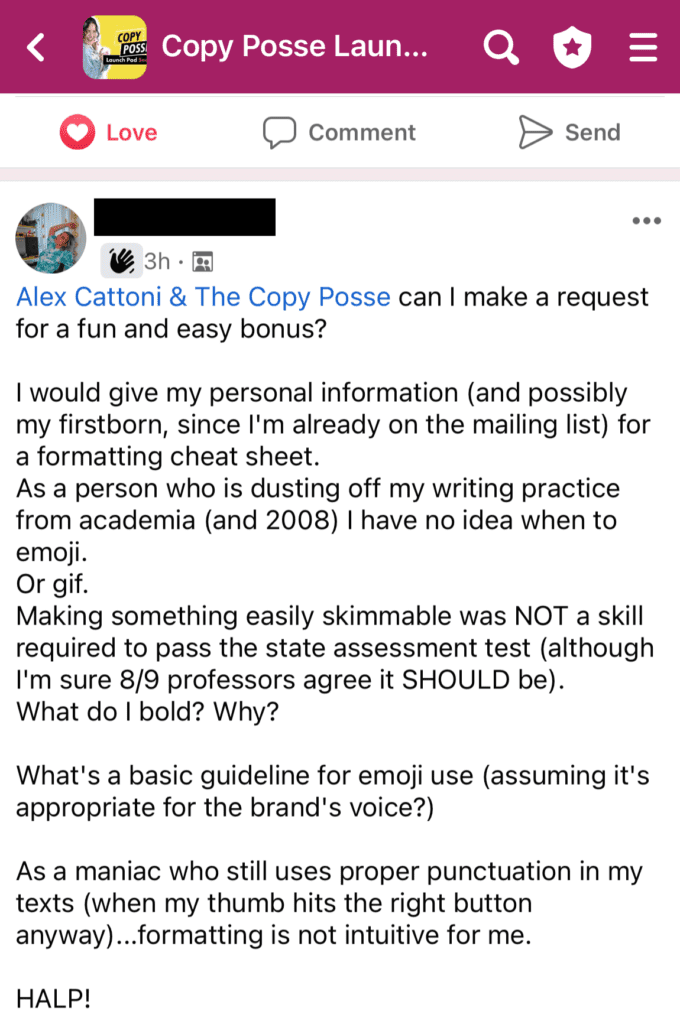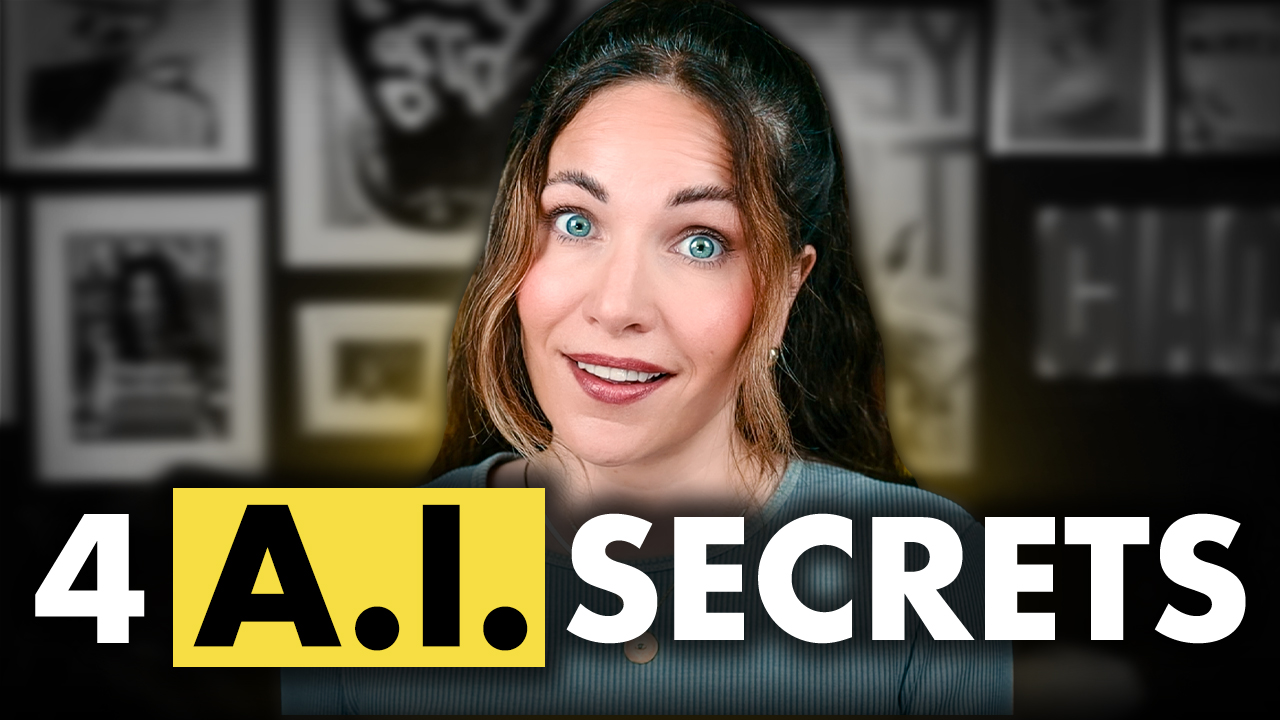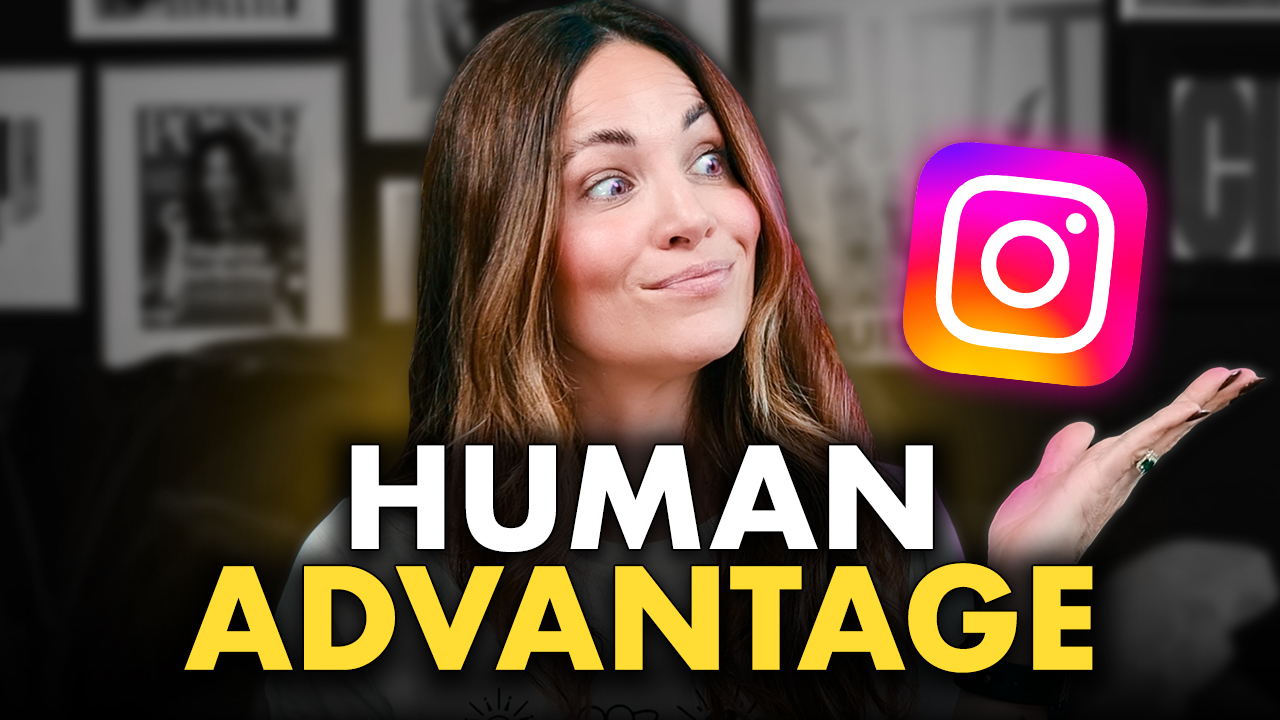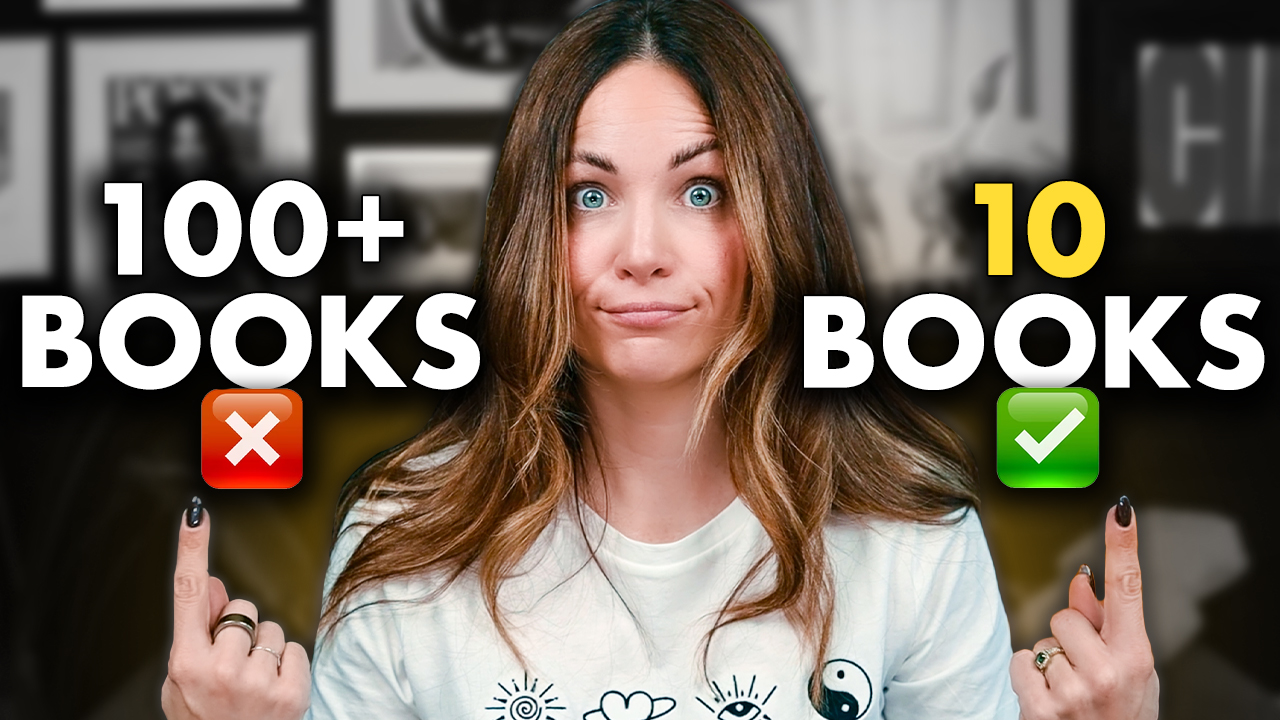Be honest… is your copy a little… boring?
If you’re following proper punctuation and grammatical rules TO THE T – like your high school Lit essay is about to be graded by Professor Umbridge…
If you don’t know when to GIF, when to meme, or when bold…
Or if you’re using even just one of THESE ;
Then I’m sorry to say…
You need this blog more than it needs you.
Hey Posse, what’s up? It’s Alex.
A few weeks ago, a Launch Padder posted this in our Facebook group…

Haha – I chuckled a bit when I read this, then I thought…
“Wow, that is actually so relatable.”
A lot of freelance copywriters are transitioning from a more technical writing background…
And for those writers, UNLEARNING everything about “proper punctuation and grammar” is really difficult.
That’s why I always say that NOT having a college English degree or formal writing experience is actually beneficial for copywriters.
Because the truth is…
Technically perfect and grammatically flawless writing just isn’t what the modern-day, internet-age consumer wants to read…
Nope. The average, everyday, doom-scrolling internet browser wants to be entertained, educated or inspired…
Even if you’re writing for a more formal niche or brand voice, your audience is way more like to respond to messaging that is clear…
- Conversational.
- Accessible.
- Easy to understand.
- Easy to skim.
- And ENGAGING.
If it’s anything but… they won’t read for very long.
So if your messaging is overly formal, long-winded or technical…
I’m sorry, but I gotta call the personality police.
In this blog, I’m going to share 5 tips for making your copywriting more engaging, relatable and easy to read – no matter your business, brand, or niche…
And if you stick around to the end, I have a FREE CHEATSHEET with even more formatting tips, tricks, and examples to help you make your copy glossy, saucy, and Posse-approved.
Okay, let’s dive in with tip #1…
Tip #1 – Write To A Friend
You’ve likely heard this one before…
“Write the way you speak”.
Or…
“Write like you’re talking to a good friend”.
But what does that really MEAN?
Well, think of it this way…
When you’re chatting with a good friend about that one time you spilled your coffee on your laptop while you were working at your fave coffee shop…
You probably aren’t using the words “decaffeinated cold brew,” “notebook computer,” or “neighborhood noshery”…
No…
Because when you’re talking to a friend, you’re not worried about sounding smart or impressive.
You’re just having a regular conversation.
THAT is how you need to write your copy.
Because here’s the thing…
The average person reads at a 7th-grade level.
YUP.
7th grade level.
So unless you’re writing for a highly educated audience, scientific journal or a legal document…
You probably shouldn’t be using industry jargon or fancy words.
Simple copy is easier to read.
When your copy is easy to read, more people will read it.
When more people read it, you’ll get more conversions.
So the simpler, the better.
If you have trouble putting this concept into action, try this exercise…
Next time you sit down to write copy, close your eyes and actually IMAGINE that you’re writing to a friend.
Make it a real person who you are close with and talk to frequently.
Alright, tip #2…
Tip #2 – Write First, Edit Later (Seriously)
This is a temptation we ALL have…
You’re writing an email…
You write the first two sentences…
Realize that you don’t love the word you used, so you go back and change the word.
Tweak this, tweak that…
Then continue with sentence three.
Stop doing that!
You’ll almost always change it again anyway.
But more importantly… it interrupts your conversational flow and your copy gets clunky.
Because it’s one train of thought that was stopped, edited…
And then a different train of thought was started, stopped, edited…
And on and on until the end of the email when you have to go back and somehow figure out how to patch it all together.
NO.
Just write.
Try this and I PROMISE you will be surprised by the stream of genius that comes from your brain through your fingers.
Will you mess up and misspell words and have to delete a lot of stuff later?
Sure!
The goal isn’t to write a perfect email on the first draft.
The goal is to write something great.
So fight the urge to correct and edit as you go…
Don’t worry about formatting, or bolding, or punctuation, grammar, readability, or ANYTHING ELSE right now.
Just get all your thoughts out.
Ok…
Tip #3 – Read Out Loud
Alright, now that you’ve written your copy in a conversational way, you can go back and clean it up.
To start, I recommend using spelling and grammar tools. Grammarly is what my team uses, but there are tons of options out there.
But as helpful and necessary as these tools are…
Make sure to ALWAYS read your copy out loud.
When you read what you’ve written in your head, you do this weird thing where you automatically read it the way you intended it to sound when you wrote it…
So you might have a ridiculously long run-on sentence that you don’t catch…
Or missing words that your brain just fills in…
But when you read your copy out loud word for word, you get to hear it from the perspective of your reader.
And your mistakes become WAY more clear.
If YOU get tripped up or have to read a sentence twice to figure out what you’re trying to say… your reader will too!
Or like this embarrassing situation where I used the “first name” merge field so much in one email that when read out loud, it sounded ridiculous!!
It was completely unintentional and the result of not following Tip #2 and then not catching it because I never actually read the email out loud.
So as you’re going through this verbal editing phase, here are some things to watch out for:
Remove redundancies.
- These will become super clear when you read your copy out loud.
Shorten wordy sentences and paragraphs.
- The rule of thumb I like to follow is that no sentence should be longer than 15-20 words.
- And no paragraph should have more than 1 or 2 sentences in it. Remember, writing great copy is a visual experience too.
- Long sentences and paragraphs, even if expertly written, are visually overwhelming to the eye.
- A lot of people won’t even BEGIN to read if it looks too wordy or if there’s a wall of text. Break your copy up into bite-size chunks
Use coherence markers to improve clarity and conversational cadence.
- Coherence markers are bridge words or transition sentences that connect two ideas or concepts together and keep people engaged with a more conversational tone and flow.
- Even though they might not have the nicest syntax or be grammatically correct by academic standards, they make copy clear and easy to understand.
- Judith Kamalski investigates this in her study. Using coherence markers like “but, so, …, that’s why” adds clarity and conversational cadence to your copy. They make your copy easier to follow.
Pssst! I’ve got over a dozen more examples of coherence markers and how you can use them inside the FREE CHEATSHEET I created for you… so check that out after this!
AND yes, I’m a BIG fan of the “…” Ellipses help you TRANSITION from one thought to the next. It’s also a visual open loop that encourages readers to keep reading. But more importantly, they give your reader a little break. It creates more of a conversational rhythm to their reading.
It’s like a little pause for the reader. And pausing is essential in ALL great conversations.
Think about it…
no one wants to talk to that guy at the party who just talks and talks and talks and never lets anyone else get a word in.
You’ll notice that even stand-up comedians do this… they don’t just talk and go from one joke to the next. They pause, they speak slowly, and they give the audience a chance to process what is being said.
Adding coherence markers and ellipses to your copy is how you can accomplish the same feel in your writing.
Get to the point, but not too fast
- If you’re reading your copy out loud and it’s going on and on and on… then you need to cut out most of what you’ve written.
- Conversational copy does not mean the same thing as long-winded, never-ending copy. People will get bored of reading even the best-written copy if it’s a story that never ends.
- I read something the other day that said humans TODAY have a shorter attention span than squirrels… and goldfish.
- And our attention span is even shorter if we’re using our phone… which the majority of people reading your copy probably are.
- This is one of the hardest things about writing copy – you want to make sure you’re giving enough information without adding anything unnecessary. But we feel like it’s ALL necessary – right?!
- We love all the asides and explanations and backstories because we feel like they’re SO relevant to the story… but are they really necessary to make your point? Be honest.
- But on the flip side of this…
- You don’t want to be super cut and dry and jump to the point immediately – that’s not very engaging.
- Great copy still needs to utilize elements of storytelling – you want to pull your reader into what you have to tell them, pique their interest, and keep them engaged…
- There is a bit of a delicate balance here between too much and not enough. It can take a bit of testing to see what your audience likes most.
Alright, so once you’ve made this initial round of edits…
You read your copy out loud and it flows well and pulls attention forward…
You can move on to the next round of editing…
Tip #4 – Optimize For Mobile
According to a study by Campaign Monitor, 81% of people are reading emails on their cell phones or mobile devices…
And like it says in this article here, if your copy isn’t optimized for mobile…
Guess what?
It’s going straight into the trash.
So what does that mean – “Optimize for mobile”?
Really, it just means – how does your copy LOOK on mobile?
It might look really awesome on that Google Doc you typed it on…
All your sentences & paragraphs look super easy to skim…
But once you pop it up on your phone it turns into a dreaded wall of text.
So as a last step in your editing process, you should always pull your copy up on your phone and see how it looks.
Break up your sentences and paragraphs to make it less visually overwhelming to the eye…
And now that you’ve done the hardest part…
It’s time for the FUN…
Tip #5 – Add Your Copy Gloss
Bolding, brackets, italics, GIFs, emojis and more!!
This is the stuff that can elevate a piece of copy from “good” to: “Wow, I LOVED reading that”.
This is what adds personality, fun, and conversational flair to your copy.
Yes, of course, the way you write and the words you select should accomplish that too…
But your copy gloss is that final touch.
The cherry on top that disgustinges you and helps you stand out to your reader.
But how do you know when to use these different formatting and graphical elements?
- How much?
- Where?
- And why?
Well… you’ll get tons of my formatting tips, tricks and examples inside my FREE Copy Posse Glosse Guide – which you’ll get your hands on in just a moment…
But the general rule to remember is…
These things are used to make a STATEMENT.
Which means you use them sparingly.
Want to convey a FEELING or stir an EMOTION that words can’t describe? Adding the perfect GIF or emoji can do the trick…
But adding GIFs all the time just for the sake of it takes away from the impact of your message…
Bolding is something ALL copy should be utilizing.
It helps draw the eye of the reader to important concepts or takeaways.
And if most people are skimming your copy (which they are) you want to make sure you’re using it strategically and sparingly.
The key is to bold small bits here and there to draw the reader in and KEEP THEM READING.
Bold key benefits and calls to action – the thing you do NOT want your reader to miss.
All of this and MORE is laid out for you inside my FREE Copy Posse Gloss Guide.
And I’ve got even more free resources and related tutorial you might like on my website so stick around!
Until next time, I’m Alex – ciao for now!


